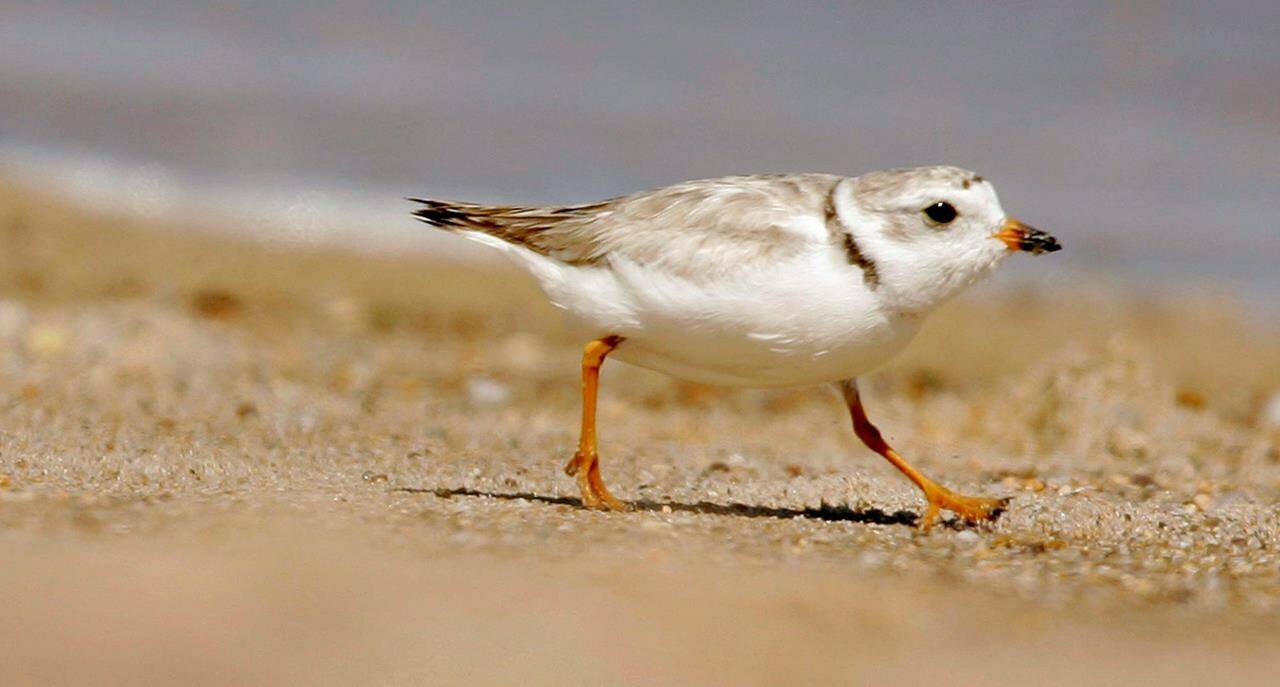Environmental advocates are taking the federal government to court over new rules to protect the habitat of an endangered shorebird species known as the piping plover.
Ecojustice Canada, representing the Federation of Nova Scotia Naturalists and the East Coast Environmental Law Association, filed a lawsuit on Oct. 31 seeking a judicial review of a habitat protection strategy mapped out by Environment Minister Steven Guilbeault.
The suit argues Ottawa previously tabled a recovery strategy to protect the plover, which it describes as being in accordance with the federal Species At Risk Act. According to the statement of claim, that strategy identified 212 entire beaches across Atlantic Canada and Quebec as critical habitat for the small, sand-coloured birds.
But an amended strategy released in September changes the way the critical habitat is identified, the suit alleges.
“The minister has adopted a ‘bounding box’ approach to critical habitat identification that fails to clearly describe the location or boundaries of plover critical habitat,” the statement reads. “Instead, the amended recovery strategy maps out locations containing critical habitat using grid squares and identifies critical habitat, not as the entirety of each square, but as any areas within those squares that possess certain vaguely described ‘biophysical attributes.’”
Environment and Climate Change Canada said in an email they are “diligently working on a response” to a question about the lawsuit and “in the process of consulting with our subject-matter experts.”
Ecojustice lawyer Sarah MacDonald said the 2012 plover recovery strategy did a “really good job” of identifying critical habitats and was “very clear” that entire beaches had to be protected. The strategy identified beaches by name and through global positioning system co-ordinates, she said.
But the amended version, she argued, made changes that weaken its effectiveness.
“Instead of saying that an entire beach is critical habitat, what they now do is they set out these what they call grid squares, these one-by-one kilometre squares that cover these beaches,” MacDonald said.
“It leaves huge sections of the beach vulnerable to the activities that we know are harmful to plovers and their habitat, like residential development and pollution and that sort of thing.”
The lawsuit calls the ministry’s decision neither justified nor intelligible.”
“The amended Recovery Strategy does not identify critical habitat to the greatest extent possible, or with any degree of geographic precision,” the statement of claim reads. “Further, the description of critical habitat in the amended Recovery Strategy is too vague to support the Minister’s duties to protect critical habitat or to support enforceable legal protections for that habitat. This undermines SARA ‘s ability to provide meaningful protection.”
Macdonald said the groups are hoping the court strikes down portions of the new recovery strategy and reverts to the original version.
Piping plovers are tiny birds found only in North America with two subspecies — one that breeds on the Canadian prairies and another along the Atlantic coast.
They were listed as endangered under the Species at Risk Act in 2003, according to the lawsuit. Between 2006 and 2016, the Canadian plover population declined another 30 per cent to 174 breeding pairs.
The lawsuit argues human activities like housing and urban development, pollution from industrial activities, mining and quarrying pose serious, ongoing threats to plover habitat.
Bob Bancroft, president of Nature Nova Scotia, says plovers are drawn to naturally caused disturbances on the beaches where they live.
“The plovers like to nest in the disturbed areas where they have pebbles and gravel and sand,” he said. “An event like (recent post-tropical storm) Fiona happens after the breeding season, and next spring depending on how the particular beach is oriented and how much of it has been disturbed, they will pick one of the areas that has been disturbed.”
MacDonald agreed, noting plover habitats change with disruptions and saying entire beaches should be protected in order to allow the birds to safely follow their natural nesting instincts.
“It absolutely doesn’t make any sense (to have certain protected spots),” she said. “And so we really hope that this lawsuit will help the government see that.”
Hina Alam, The Canadian Press

